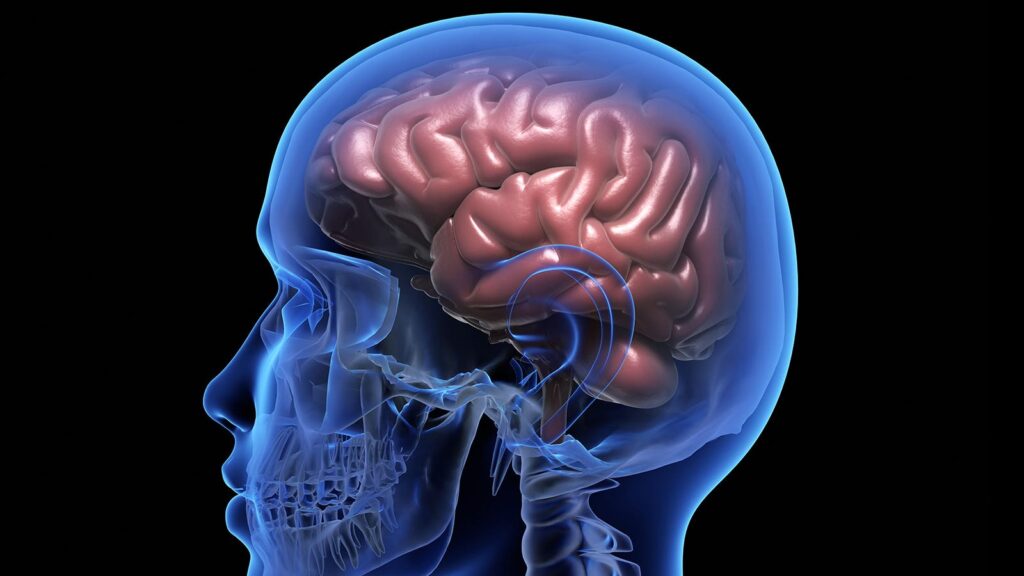Human brains appeared to be getting bigger, temporal trends showed.
From the 1930s to 1970s, brain volumes and cortical surface area of people who had neither dementia nor stroke became progressively larger, reported Charles DeCarli, MD, of the University of California Davis in Sacramento, and co-authors in JAMA Neurology.
When researchers compared people born in the 1930s with those born in the 1970s and adjusted for age and sex, they found (all P<0.001):
- Intracranial volume was 6.6% greater (1,234 vs 1,321 mL)
- White matter volume was 7.7% greater (441.9 vs 476.3 mL)
- Hippocampal volume had a 5.7% greater value (6.51 vs 6.89 mL)
- Cortical surface area had a 14.9% greater value (1,933 vs 2,222 cm2)
Overall gray matter volume did not increase significantly. Cortical thickness was thinner by 20.9% (2.34 mm vs 1.85 mm) over the same period.
The larger brain volumes indicate larger brain development and potentially greater brain reserve that may explain the declining incidence of dementia, the researchers hypothesized.
“The decade someone is born appears to impact brain size and potentially long-term brain health,” DeCarli said in a statement. “Genetics play a major role in determining brain size, but our findings indicate external influences — such as health, social, cultural, and educational factors — may also play a role.”
The researchers used MRI to assess the brains of 3,226 Framingham Heart Study participants born from 1930 to 1970. Participants had a mean age of 57.4 years when they were scanned, and 53% were women.
An earlier report showed that among Framingham Heart Study participants, the incidence of dementia had declined over the course of three decades.
“Brain health, reflective of a wide spectrum of factors, including early brain development and environment influences, lifestyle, and education levels, may be one of the key pathways explaining this decline in dementia risk,” noted Prashanthi Vemuri, PhD, of the Mayo Clinic in Rochester, Minnesota, in an accompanying editorial.
Although the new Framingham Heart Study research “is exciting and will bring attention to secular trends in brain health, much work is yet to be done to validate and replicate these findings and, more importantly, understand the mechanistic basis of these trends,” Vemuri observed.
“Given that dementia risk is multifactorial, thorough consideration of multiple factors and biological measurements in different birth cohorts will be needed to understand these trends,” she pointed out. “Do these secular trends in improvement of brain health underlie the decrease in dementia risk? The jury may be still out, but the authors are commended for investigating new avenues.”
In the new Framingham study, about half (46%) of participants had achieved some level of college education. No participants had prevalent dementia, stroke, or other significant neurological disorders at the time of MRI.
People’s height increased over the decades: people born in the 1930s had a mean height of 66 inches, compared with 67.6 inches for those born in the 1970s. Trends in intracranial volume remained significant after adjusting for height.
In a sensitivity analysis, the researchers evaluated a subgroup of participants with similar ages at MRI born in the 1940s and the 1950s and found that larger intracranial volume, hippocampal volume, and cortical surface area were associated with the 1950 birth decade.
The Framingham Heart Study cohort is predominantly white, healthy, and well educated, and not representative of the broader U.S. population, DeCarli and colleagues acknowledged. The cross-sectional design of the study is another limitation.
“Longitudinal analyses showing secular differences in rates of regional brain atrophy would further support evidence of increased brain reserve through resilience to age-related atrophy,” the researchers wrote.
-
Judy George covers neurology and neuroscience news for MedPage Today, writing about brain aging, Alzheimer’s, dementia, MS, rare diseases, epilepsy, autism, headache, stroke, Parkinson’s, ALS, concussion, CTE, sleep, pain, and more. Follow
Disclosures
This research was supported by the National Institute on Aging, the National Institute on Neurological Disorders and Stroke, and the National Institutes of Health (NIH).
DeCarli reported serving as a consultant to Novartis on a safety study of heart failure during the conduct of the study and receiving consultant fees from Eisai and Novo Nordisk outside the submitted work.
Co-authors reported relationships with the NIH, the Alzheimer’s Drug Discovery Foundation, and the Alzheimer’s Association.
Vemuri reported receiving grants from the NIH outside the submitted work.
Primary Source
JAMA Neurology
Source Reference: DeCarli C, et al “Trends in intracranial and cerebral volumes of Framingham Heart Study participants born 1930 to 1970” JAMA Neurol 2024; DOI: 10.1001/jamaneurol.2024.0469.
Secondary Source
JAMA Neurology
Source Reference: Vemuri P “Improving trends in brain health explain declining dementia risk?” JAMA Neurol 2024; DOI: 10.1001/jamaneurol.2024.0476.
Please enable JavaScript to view the

